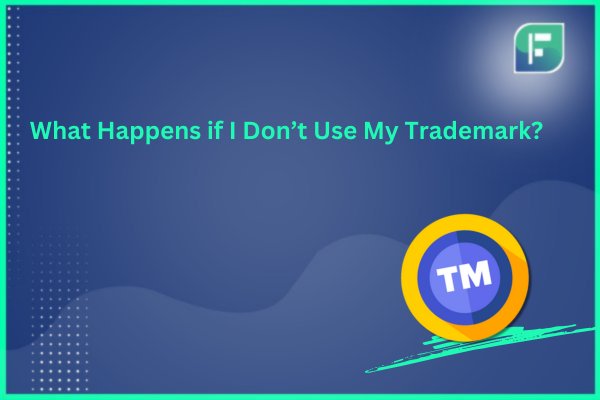For businesses and people who have spent resources and time to get a trademark, not utilising it may be bad for growth. After all, trademarks are assets which guard the brand identity and set a business apart from its competition in terms of services or products. However utilising a registered trademark in a terrible manner can have severe effects, and knowing these implications is important for any trademark proprietor.
Meaning of Abandoning Trademark Rights
The most critical danger of not utilising a trademark would be losing those trademark rights. Trademark rights are looked after by continual use in commerce and are eroded by prolonged non-use. Abandonment could happen based on many conditions. For instance, in case a trademark owner declares its intent to give up the mark or doesn’t take measures to resume usage after being informed of the possible abandonment, the abandonment might happen sooner.
Trademark Registration Abandonment Consequences
When a trademark registration is considered abandoned, the owner will lose the exclusive right to make use of the mark in connection with all the products or services that it was registered. What this means is that third parties might adopt and make use of the exact same or an equivalent mark without risking legal action. The abandoned trademark registration could also be for sale for registration by others, further lowering the rights of the previous owner.
Abandonment can also have wider implications for a brand’s image or market position. Whenever a competitor starts utilising the abandoned trademark registration, it can create consumer misunderstandings and diluted the brand’s equity and goodwill in the long run. Moreover, gaining rights to an abandoned trademark is often expensive and calls for legal battles along with regaining brand recognition.
Keeping Your Trademark Rights
Trademark owners must continually use their marks in commerce to stay away from abandonment risks. This means you use the trademark on goods or services and in advertising or marketing materials. Occasionally or token usage might not be enough to maintain trademark rights.
Besides active usage, trademark owners should check their marks and take proper action against infringers. This ensures the mark is secure and also shows the owner wants to protect and enforce those rights.
Exceptions and Special Circumstances
Although non-use is discouraged, there are exceptions and specific situations where a temporary break in utilising a trademark might be admissible with no abandonment. They include:
1. Special circumstances temporary non-use:
If a trademark owner can show that special circumstances outside their control triggered the non-use for instance a manufacturing disruption, or regulatory changes, economic recession, the mark might not be abandoned. The owner should still show a genuine intention to resume use and take appropriate measures to do so.
2. Controlled licencing:
In case the trademark owner licences the trademark to third parties for use in commerce, the mark could be in use even when the owner doesn’t really put it to use himself. This is called controlled licensing and preserves the trademark rights while permitting other people to make money from the mark’s goodwill.
3. Excusable non-use:
Non-use might be excused if the trademark owner demonstrates legitimate reason for the non-use such as continued advertising or planning for use of the mark. But it’s for the owner to confirm his or her own burden of proof and the non-use period should be reasonable and backed by evidence.
How to do Good Trademark Management
Trademark owners should conduct adequate trademark management to safeguard their trademark rights and stay away from non-use. That includes:
1. Regularly reviewing and auditing usage of registered trademarks in all relevant channels (products, advertising, packaging, and internet presence).
2. Creating and applying procedures and policies to make sure uniform and proper usage of trademark registration by staff members, licensees and permitted third parties.
3. Keeping accurate records of trademark registration use including specific, channels, and dates services or products related to the mark.
4. Keeping track of the marketplace for possible infringement and swiftly dealing with any unauthorised use of the trademark registration.
5. Assessing whether trademark maintenance filings are necessary (renewal applications or declarations of use) showing continued use and intention to maintain the mark.
By dealing with their trademark registration portfolio and regular use, businesses can safeguard their brand assets and stay away from non-use and possible abandonment.
Conclusion
Trademark registration helps companies differentiate themselves in the market and establish brand recognition. However these valuable assets must be utilised consistently. Not utilising a registered trademark could result in loss of exclusive rights and eventually abandonment, with potentially severe consequences on a brand’s identity and market position.
To remove these risks, trademark owners have to use their marks intentionally, monitor for infringement, and follow excellent trademark management methods. In this way, they can defend their earned trademark rights and develop their brand equity and goodwill.
FAQs
1. How long could I not use my trademark or risk abandonment?
There’s no set duration, but a non-use period of many consecutive years could generate an assumption of abandonment.
2. What if I licence my trademark to others to utilise?
Controlled licensing, where you let third parties use your mark, will help safeguard your trademark rights.
3. How do I demonstrate intention to keep my trademark?
Keep accurate records of usage, monitor for infringement and file necessary maintenance documents to show intention.
4. What in case my trademark is considered abandoned?
You lose exclusive rights to the mark and others may adopt and register the same or similar marks.
5. Can I get rights to an abandoned trademark?
Regaining rights can be costly and involve legal fights and gaining brand name recognition.
6. How do I stop trademark abandonment?
Establish responsible trademark management practices such as regular audits, consistent use and action against infringement.





